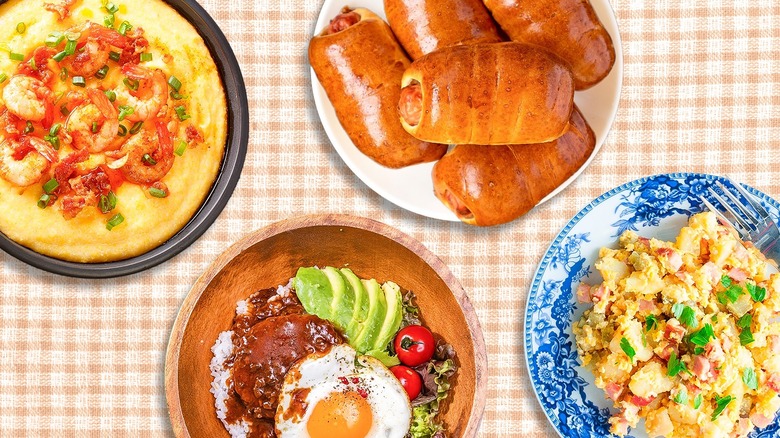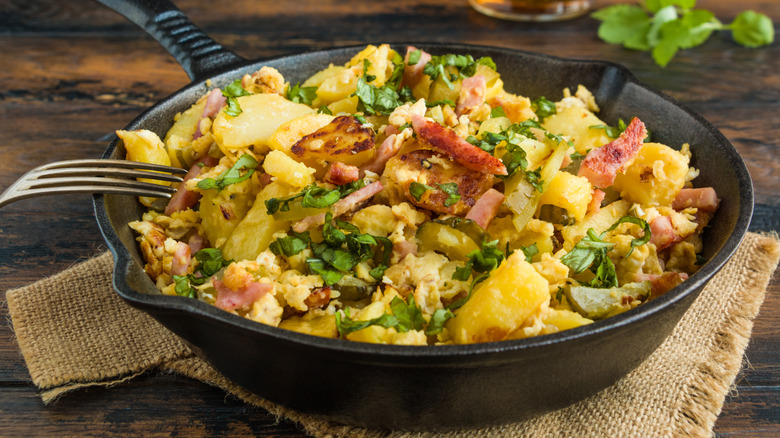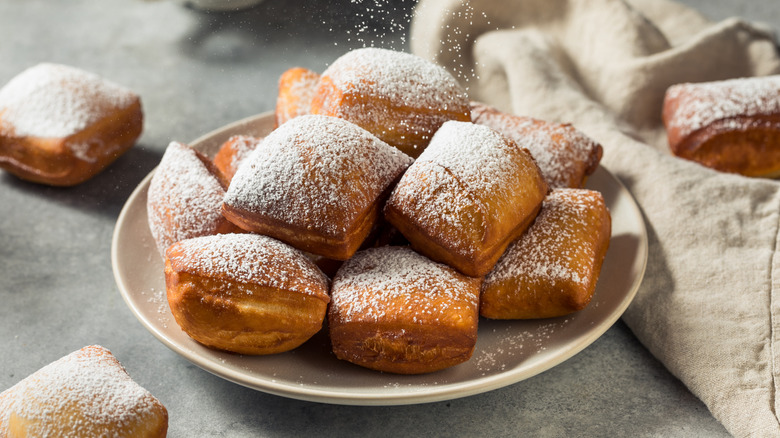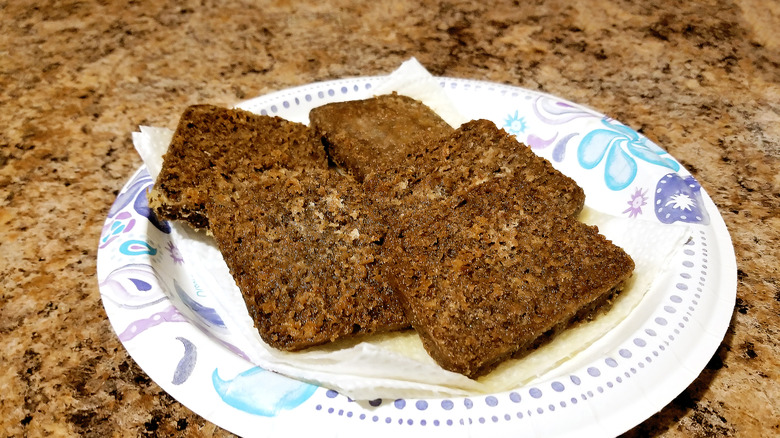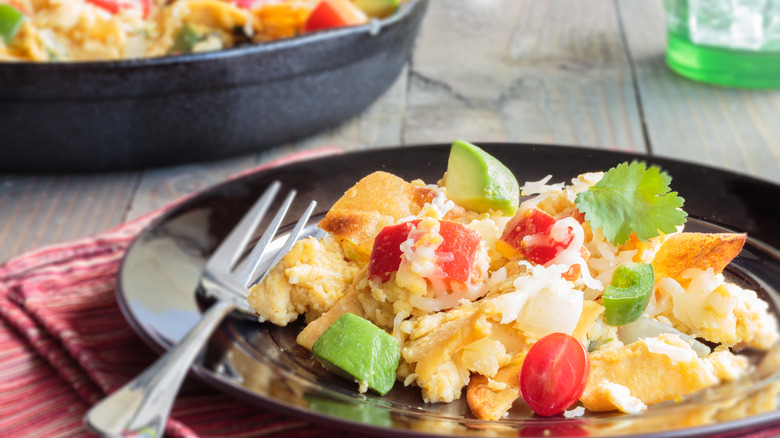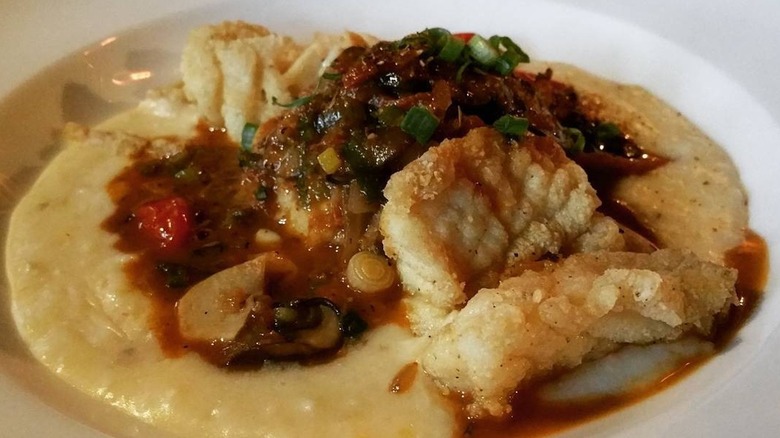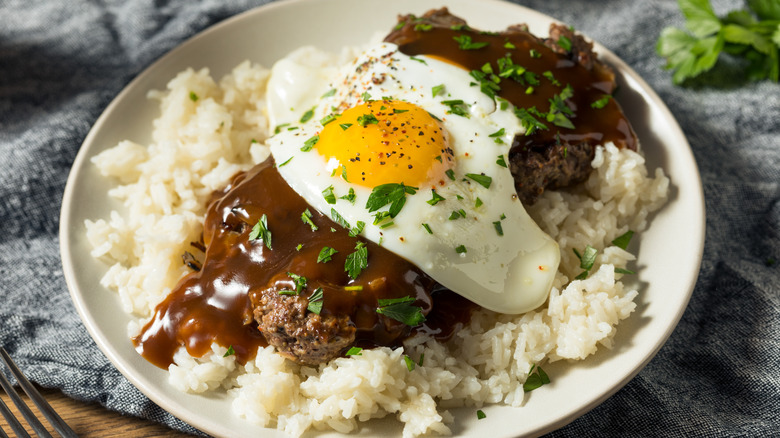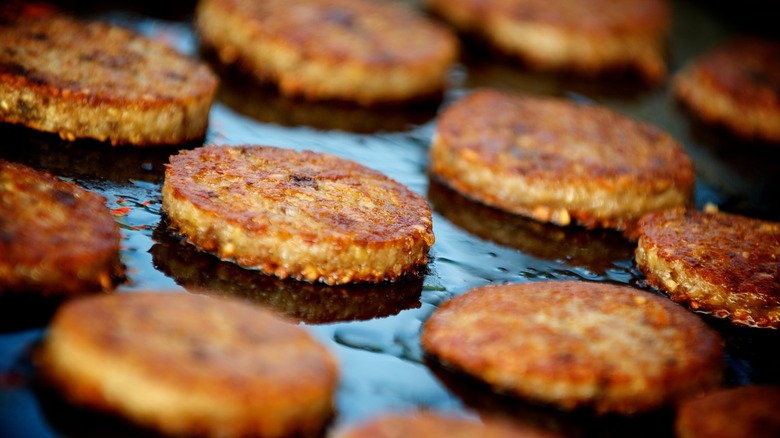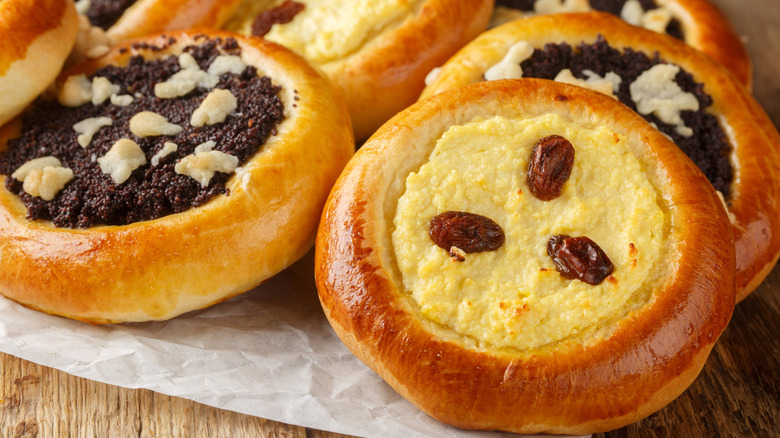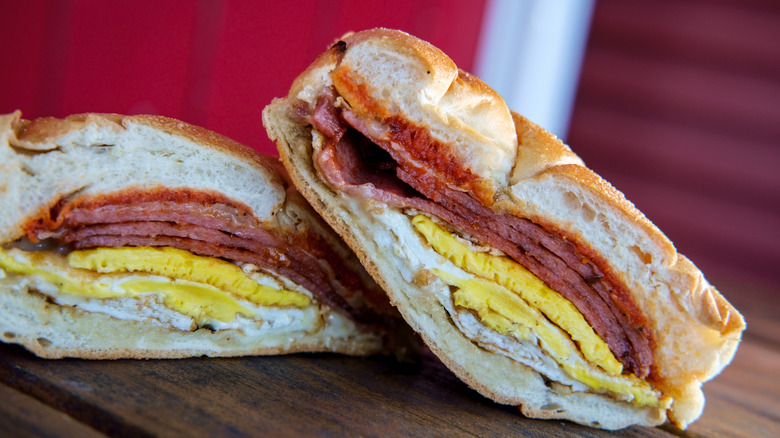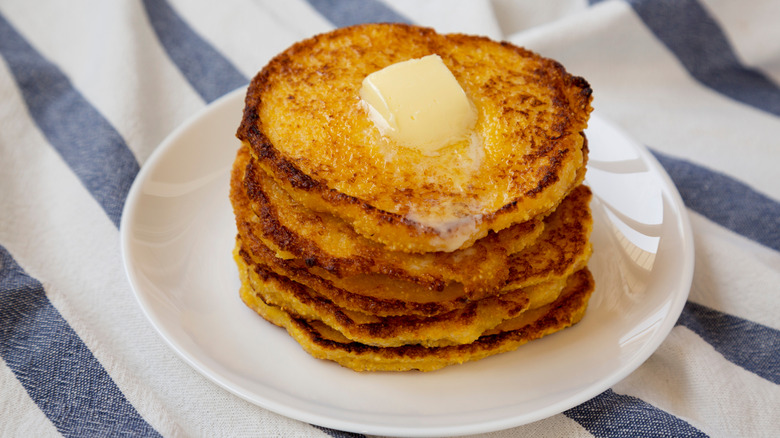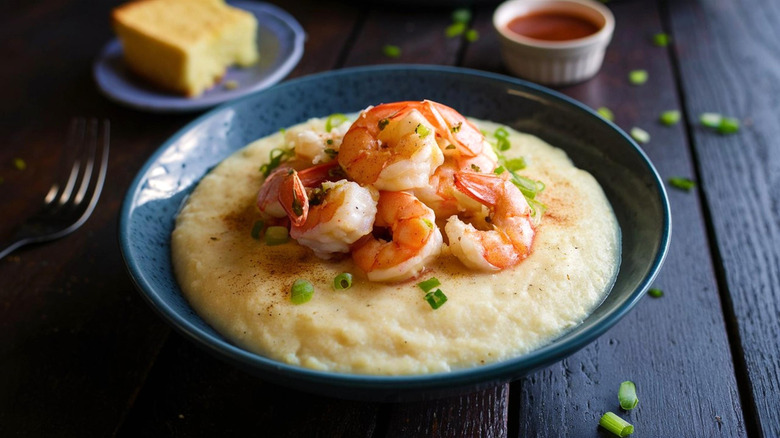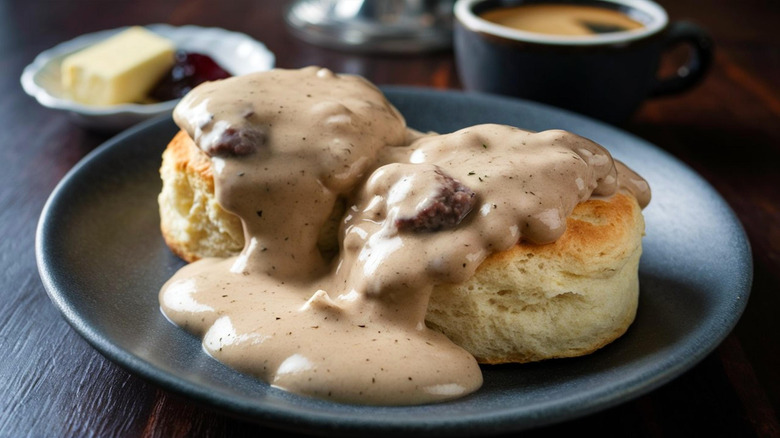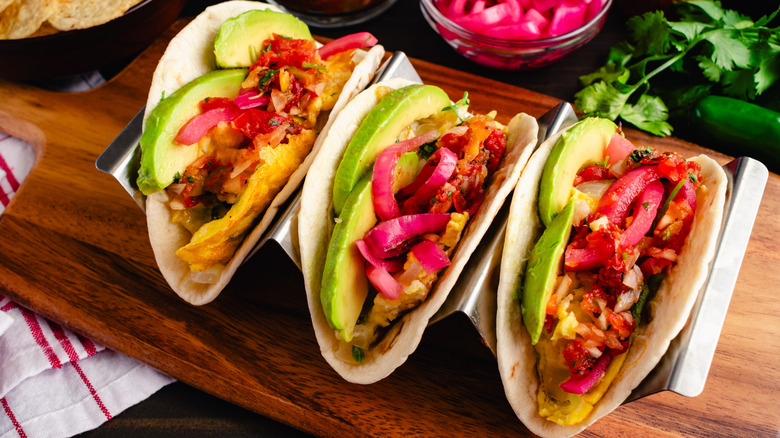14 Regional American Breakfasts We Wish We Could Eat Everywhere
We all know the popular saying claiming that breakfast is the most important meal of the day. But even without it, everyone is aware that breakfast regardless of how big or small it is can set the tone for the rest of the day. Many breakfast dishes are not limited by city lines or state borders. Bagels, egg sandwiches, pancakes, or waffles are only some of the universal morning items you can easily find in most regions. However, regardless of how interconnected we all are, there are still some breakfast dishes exclusively associated with one place that can't seem to get a proper breakthrough outside its native location. We wanted to collect all those in one place to show the sheer American ingenuity that relies on regional ingredients and traditions to create amazing locally-confined breakfast dishes.
Some of these have been popularized and made into pan-regional specials, but many are still exclusively associated with the micro-locations. Regardless, these breakfast items should be on your must-try list and can be a totally legit reason to choose a destination for your next food-centered trip.
Hoppel poppel
Hoppel poppel, occasionally referred to as hoffel poffel, is a breakfast dish you'll come across in Wisconsin and Iowa. Though less familiar in the States, the combination is well known in Germany and was probably introduced to the region by German immigrants. In its native country, hoppel poppel was created as a great way to reuse leftovers, but in the Midwest, it was reinvented as a full-scale breakfast.
You will not find a standardized recipe for hoppel poppel, as this is a dish where creativity is welcomed and that can be easily customized. Essentially, you can look at it as a loaded version of scrambled eggs. Typically, you'll find it packed with diced potatoes, cheese, and some type of preserved meat, but there are many renditions. Herbs are commonly used, and many throw onions into the mix. Some use chunks of bread to give the dish some chew, while others enrich it with mushrooms or peppers. The dish is assembled in a skillet, so expect some crispy crust on the bottom.
Beignets
Beignets don't need much introduction. These pillowy parcels of fried dough are an iconic New Orleans specialty. Though they can pass a dessert or a snack, beignets are also classified as a sweet breakfast. There are many theories about their origin, with the two most prominent mentioning French Ursuline nuns — though Louisiana beignets are not like the French version — and possible Canadian roots. Regardless of the true origin, beignets have been present in Louisiana since the 18th century and have become one of the signature local dishes.
Beignets are made with yeasted dough cut into rectangles that puff up when thrown into a sizzling oil. In many ways similar to a classic doughnut, this Louisiana version does not have a hole. This means it can hold a lot of topping, and in this case, the topping is a truly generous layer of powdered sugar. Besides the plain, traditional version, there are many other savory and filled varieties. But if you want to keep it classic, have the plain sugar-coated pillow and pair it with café au lait.
Scrapple
Scrapple is another American breakfast that is credited to German influence in the States. You will typically find this mystery meat product in Pennsylvania and New Jersey where it is served and enjoyed as a filling breakfast.
Scrapple is made with various pig cuts mixed with cornmeal and seasonings. Traditionally, it uses offal and less desirable parts of the animal, while sage and thyme are commonly added for aroma. The blend is cooked and shaped into a log, which is then sliced and pan-fried until it develops a crispy crust. Though scrapple is made with some questionable animal parts, the final result is a flavor-packed product with an amazing combination of a soft center and crunchy shell that resembles a typical processed meat product. Scrapple can be served with savory condiments, but you'll also sometimes see it paired with apple butter, syrup, or jelly.
Scrapple was introduced by the Pennsylvania Dutch who came to the region in the 17th century and were, in fact, German. They developed scrapple as a means to use all parts of the animal at a time when meat was a precious commodity. In the 19th century, commercially produced scrapple also became available, and to this day, there are companies that produce this specialty for all those craving familiar nostalgic flavors.
Migas
Texas-style migas should not be confused with garlic-based soup from Mexico, or the traditional versions from Spain and Portugal in which stale bread is soaked and then fried along with chorizo, smoked paprika, and garlic, sometimes with the addition of ham, bacon, or veggies. The version from Texas borrows the name — migas translates as crumbs — and the philosophy of repurposing ingredients into a new dish, but it relies solely on local ingredients.
There is no set recipe for Texan migas, but the basic principle is to fry some sliced tortilla strips and smother them with lightly whipped eggs. The mix is usually enriched with cheese that is folded in to make the eggs extra indulgent. The eggs are served with a tomato-based sauce packed with sweet and spicy peppers. Migas are best made with corn tortillas that are much better at holding shape, so they lend a wonderful texture to the dish. The final result is a perfect combination of ingredients and textures that create an incredibly filling Texan-style breakfast or a perfect option for a weekend brunch.
Grits and grunts
Grits and grunts is a breakfast dish synonymous with Florida. The first part of the combination is familiar to many. Grits are a popular Southern staple made with ground corn cooked into a thick, porridge-like dish that is often enriched with butter, bacon, or cheese. Though grits are common to many Southern states, whether served on their own or in the classic combination with shrimps, they find a unique seafood partner in Florida.
The other part of the dish is a type of fish, locally known as grunts. Distinguished for its horizontal stripes, grunts inhabits the Atlantic Ocean and is mostly caught and consumed in the Southeastern U.S. It is not easily found or commercially valuable, but fishermen occasionally use it for their meals, which is how it eventually developed into this regional breakfast. In this combination, grits are cooked the classic way, while the fish fillets are sprinkled with Cajun seasoning and fried until crisp. The dish is dressed with fried bacon bits and sautéed onions to create a filling, finger-licking breakfast typical for the Florida Keys.
Loco moco
The title of the most unusual American breakfast could go to Hawaii. Loco moco might not be the first thing you associate with Hawaii, but this savory combination of rice, hamburger patty, fried egg, and a zingy brown sauce is a must-try in the region.
For most locals, loco moco is a comforting dish. It is something you can whip up at home, but it is also a common sight on restaurant menus. The dish starts with cooked white rice that forms a neutral, fluffy base for the well-seasoned grilled beef patty. The combination is doused in a thick, flavor-packed brown sauce that's more akin to a rich gravy. Made with a savory beef broth, this dark brown sauce often includes sautéed onions and mushrooms for a pleasant umami kick. Finally, the dish is rounded up with a fried egg that should ooze a creamy yolk when you cut into it.
The most popular story about the invention of this regional specialty claims that the origin dates back to the 1940s at the Lincoln Grill Restaurant, located in Hilo. Allegedly, teenagers from the local club who used to hang out at the restaurant asked for a dish that could satisfy their growing appetites. The name is allegedly a reference to the first person who was brave enough to try the new invention.
Goetta
Goetta is a breakfast you'll only find in Cincinnati. Best described as a sausage-like patty, German immigrants introduced it sometime in the 19th century. It mimicked similar meat products from Germany and was mainly distinguished by the addition of oats, which were a cheap and nutritious filler. Despite its humble origins, goetta was soon promoted into a beloved local favorite and is still an important part of Cincinnati's food culture.
At its core, goetta is a mix of ground meat, oats, and seasonings. Due to the addition of steel-cut oats, this meat patty has a unique texture that's unlike any other ground meat product. The ingredients are mixed and formed into a thick roll, which is then portioned into thin slices that are fried until they attain a crispy, lightly caramelized layer. You will typically see it fried and served with fried eggs, sometimes drizzled with syrup or applesauce. The patty is also sometimes turned into chunks that can be incorporated into scrambled eggs or served on top of pizza and nachos, but local chefs thought of many other creative ways to use it besides the standard breakfast.
Kolaches
Kolaches are round, pillowy cakes made with yeasted dough that you will easily recognize by a hollowed center that holds a delicious filling. Kolaches roots are in Central Europe, namely the Czech Republic and Slovakia, but these pillowy treats have a huge fan base in the U.S. Though you will find them in several American states, they are mostly associated with Texas. It's assumed that the tradition of making kolaches was introduced in the 19th century and was preserved mostly by Czech families.
The fillings inside kolaches feature various sweet options, such as fruit preserves, poppy seeds, and sweetened cheese, but chocolate or similar contemporary versions are also available. Besides sweet kolaches, Texans added their unique twist by creating various savory renditions that reflect local traditions and use local ingredients such as cheese, sausages, and jalapeños. Savory versions are sometimes called klobasniky, but have in mind that these are typically more similar to pigs in blankets.
Whether you prefer sweet or savory versions, kolaches are amazing for breakfast but should not be limited by such restrictions. Feel free to enjoy this unique Texan tradition at any time of day.
Pork Roll/Taylor Ham
There are many stories surrounding the origin of the pork roll, which is also commonly referred to as Taylor ham, but the truth is pretty straightforward. The first version was officially produced in 1856 by John Taylor in Trenton, New Jersey. The original version was marketed as Taylor Ham, and though Taylor eventually had to change the name of his product due to legislative procedures, the original name is still prevalent in North Jersey.
Pork roll is best described as a processed pork-based meat product. The manufacturing process is a bit of a mystery, but pork roll is cured, smoked, and then cooked. The final result is a salami-like product with a soft texture and uniform consistency that shows its best qualities when thrown on the grill to crisp up. The slices are tucked inside a bread roll, usually with eggs and cheese, to make Jersey's favorite sandwich.
Johnnycakes
Rhode Island has several signature specialties, but johnnycakes might be its most emblematic dish. Best described as cornmeal-based pancakes, they are a breakfast staple that you will usually find served with a slab of butter and doused in syrup.
Though they are synonymous with Rhode Island, there is no uniform way to make them or a universal recipe to follow. The locals often dispute the ingredients and the correct technique, but johnnycakes are loved in all local interpretations. Traditionally, they are made with white or yellow cornmeal that is mixed with salt and water or milk, sometimes tweaked with sugar. The thick batter is spooned on a hot griddle until the cakes cook through and develop a crispy, caramelized crust. The locals don't only reserve them for breakfast, but they seem most fitting as an early morning treat.
There are many narratives explaining the origin and the etymology of this local dish. One of the most popular is the one claiming that they were invented by the native tribes who used to grow corn in the region, which classifies johnnycakes as a true American classic.
Shrimp and grits
As it is typically associated with the entire American South, shrimp and grits is not a microlocal dish but is still deemed as a regional specialty. Though you will often see it cited as a Southern staple, the combination of shrimp and grits first appeared in South Carolina and Georgia, classifying it as a classic Lowcountry dish. At that time, the combination was known as breakfast shrimp or shrimps and hominy.
As it's so iconic, shrimp and grits does not call for elaborate descriptions or long introductions. Despite various contemporary versions, at its core it consists of a base made with grits cooked in milk, typically boosted with some butter to attain a more desirable, creamier consistency. Shrimps are generally sautéed and nestled on top of steaming grits. It is assumed that shrimp and grits was created as a humble fishermen dish with available ingredients that could make a filling and affordable meal, but the invention was at least partially influenced by African heritage. For most of its existence, this classic combination remained limited to the Lowcountry, but in the 1980s, it was suddenly popularized and spread throughout the South.
Biscuits and gravy
Biscuits and gravy is another breakfast typical for the American South. It started as a simple and affordable everyday dish, and many would still classify it as such, along with the description of a comforting Southern classic. Theories suggest that it first appeared during the Revolutionary War, but some propose Appalachia as the likely origin, explaining that it could have been developed as a nutritious meal at local lumber factories. Though we don't know much about how it came to be — as is the case with many homey dishes — we can declare that it is one of our favorite Southern breakfast items.
The original version was probably not like the one we eat now, as the biscuits were most likely not the soft and airy butter-laden versions we enjoy today. The gravy was then probably doused over to soften them up. Today, we enjoy the perfect biscuit texture, but we also keep the gravy as it makes the perfect partner. Though the gravy differs depending on the region, you can expect rich flavors and a typical dense texture that will be the perfect way to start the day.
Breakfast tacos
If you spend a morning in Texas, instead of more popular breakfast burritos, you might come across a similar tacos-centered version that still remains mainly a Texan tradition. As you may assume, the breakfast taco is a classic taco version tweaked with classic breakfast ingredients. Though the main premise is to use eggs, cheese, and meat, breakfast tacos appear in many different versions. Arguably, the best ones come from Mexican restaurants that have access to the best ingredients and traditional dishes that can be paired with eggs and reinvented as breakfast.
Classic breakfast taco comes with a wheat or corn tortilla, though the former is more common and easier to handle. In most cases, the parcels are packed with scrambled eggs, cheese, and some type of meat. This can include barbacoa leftovers at a taqueria or typical breakfast meat at regular breakfast joints. Potatoes are sometimes added, as are refried beans, while some versions also come meat-free and opt for vegetable garnishes. Breakfast tacos usually come in pairs or as a trio and make an amazing breakfast dish that lasts until lunchtime. Still, it is a much lighter affair than the heavily loaded breakfast burrito.
Dutch baby
A Dutch baby is often called a pancake, and though it uses the same ingredients as your classic breakfast pancake, the unique preparation yields an entirely different dish. A typical Dutch baby uses milk, eggs, flour, and sugar to create a silky smooth, runny batter that is poured into a hot skillet. Before adding the batter, a generous amount of butter is melted and heated in the hot skillet, so as you pour the liquid batter, it will immediately start to cook and bubble on the edges. The skillet goes straight into the oven, where the batter puffs up. Once cooked, the edges will stay tall and crispy, while the center will collapse and become moist and tender. Dutch baby is usually enjoyed as a sweet breakfast. The basic version is smothered in butter, sprinkled with powdered sugar, and drizzled with lemon juice, but it is also commonly paired with fresh fruit or other sweet garnishes. Savory versions have also become standard these days.
Based on the name, you might assume that this unusual looking single pancake has its roots in the Netherlands, but the inspiration came from a classic German dish known as pfannkuchen. The contemporary American interpretation was most likely born at Manca's Café in Seattle, and the corruption of the name probably appeared when the word Deutsch, which translates as German, accidentally became Dutch. Though Dutch baby pancakes pop up outside its native state and are even found on the menus of some pancake chains, it's still somewhat of a niche breakfast.
